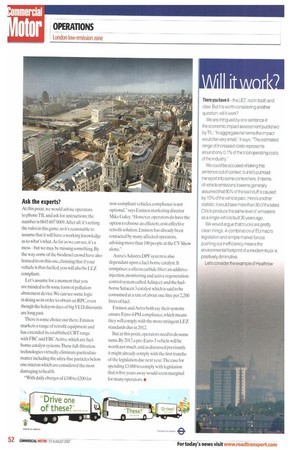1111111111
Page 52

If you've noticed an error in this article please click here to report it so we can fix it.
There you have ii — the LEZ, red in tooth and claw. But it is worth considering another question: will it work?
We are intrigued by one sentence in the economic impact assessment published by TfL: "In aggregate net terms the impact would be very small," it says. "The estimated range of increased costs represents around only 0.1% of the total operating costs of the industry."
We could be accused of taking this sentence out of context, but let's put road transport into some context here. In terms of vehicle emissions it seems generally assumed that 90% of the bad stuff is caused by 10% of the vehicle parc. Here's another statistic: it would take more than 30 of the latest CVs to produce the same level of emissions as a single vehicle built 30 years ago.
We would argue that trucks are pretty clean things. A combination of EU macro legislation and simple market forces pushing out inefficiency means the environmental footprint of a modern truck is positively diminutive.
Let's consider the example of Heathrow
























































































































































































